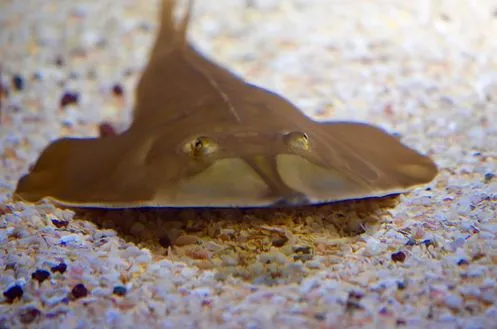After the birth of four baby blackchin guitarfish Glaucostegus cemiculus in September 2022, 4 more baby guitar rays were born at Nausicaá on 2 June 2023.
The female, identified as pregnant by the keepers, had been isolated a few days earlier in a reserve tank. The spawners are the guitarfish that live in the Grand Bassin de la Haute Mer.
More than fifty babies have been born since the guitarfish arrived at Nausicaá, and in 2009 Nausicaá hosted the world's first reproductions of stingrays in an aquarium.
As the species is not very prolific, these new births are always very pleasing.
From the moment they are born, the babies are the focus of the keepers, who monitor their behaviour and diet. Babies weighing 150g at birth are isolated in a reserve tank so that they can be monitored more easily.
Did you know?
The female guitar ray is unique in having two uteruses! The mode of reproduction is viviparous aplacental, meaning that the embryo develops by feeding on the protein-rich mucus produced by the uterus.
So unlike other rays, such as the curly ray, which lays eggs in which embryos grow, the guitar ray gives birth to babies that are already formed and self-sufficient. It can give birth to one or two litters a year, each with up to 12 babies.
